State of our atmosphere and climate
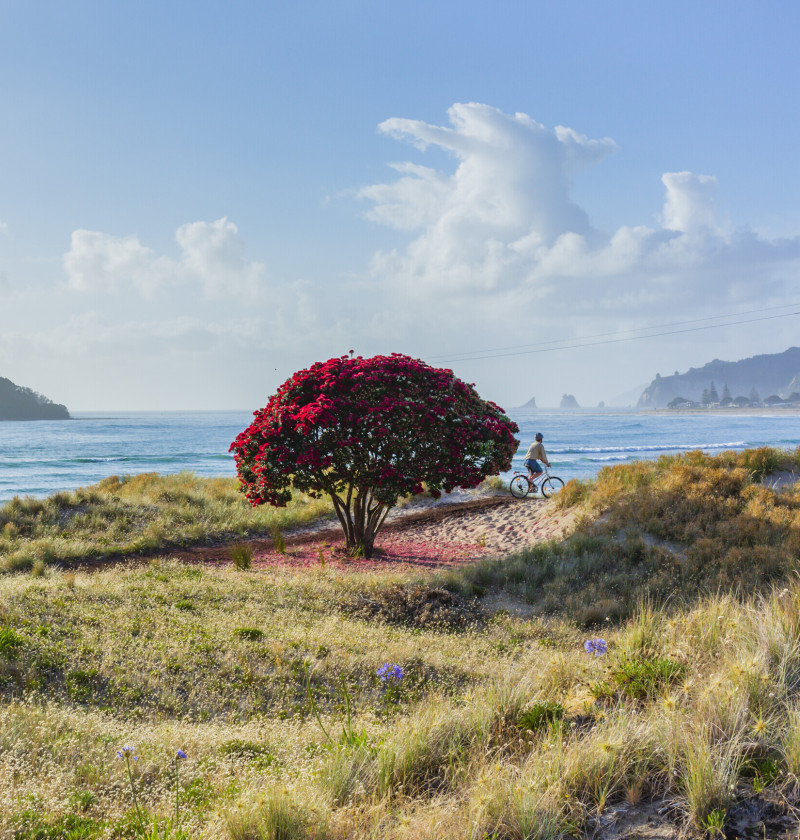

Whakarongo ki te taiao
Climate change is becoming increasingly evident in Aotearoa New Zealand. Our average and extreme temperatures have increased since pre-industrial times. The growing season has lengthened, and the number of frost days has decreased in most parts of the country. Annual rainfall is changing in most places in Aotearoa, with the south of Aotearoa becoming wetter and the north and east becoming drier. Medium-term droughts are becoming more frequent.
Extreme weather events, such as those leading to floods and slips in Tairāwhiti and Auckland, storms in Westport and Nelson, and droughts across the country, are becoming both more frequent and severe. Concern is increasing that changes in the frequency of events will lead to a higher risk of multiple severe weather events that overlap in time and/or space.
Gradual changes, such as increasing temperatures, may not be as noticeable in our day-to-day life, but can cause cascading effects through the environment and lead to irreversible changes. These changes in our atmosphere and climate are evident and reflected through changes in our ecosystems and taonga (treasured) species, altering ngā tohu o te taiao, or environmental indicators.
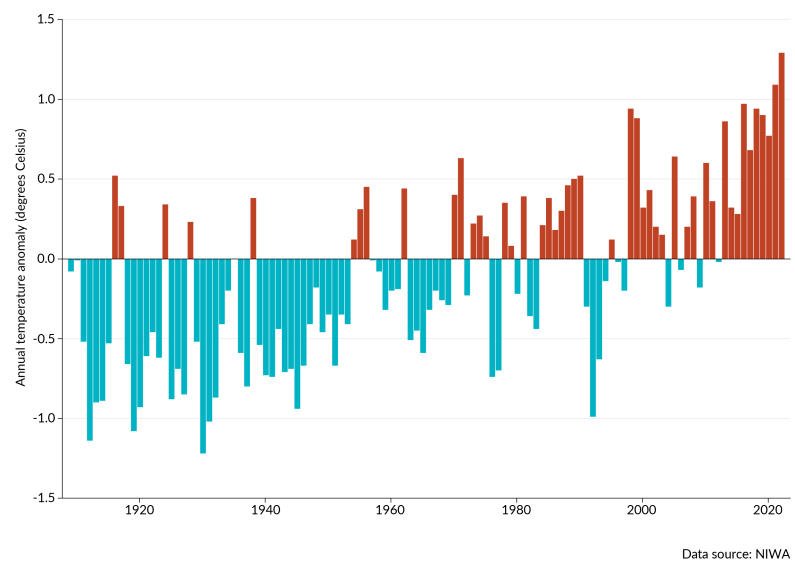
Annual rainfall increased at many sites in the southern South Island. Of the sites where rainfall decreased, many were in the northern half of the North Island (figure 6).
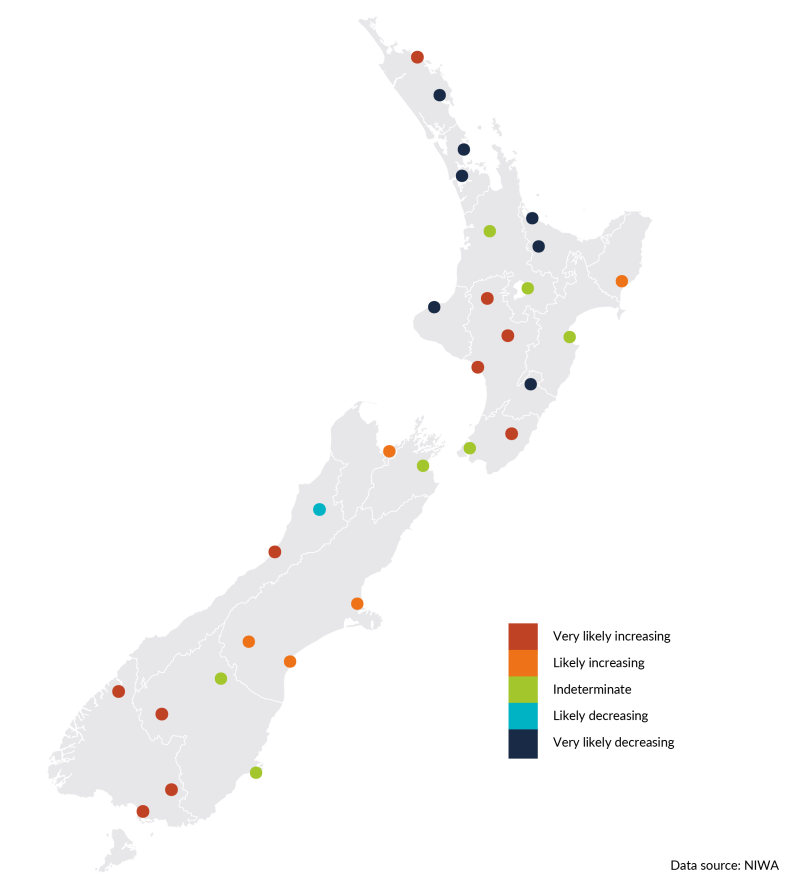
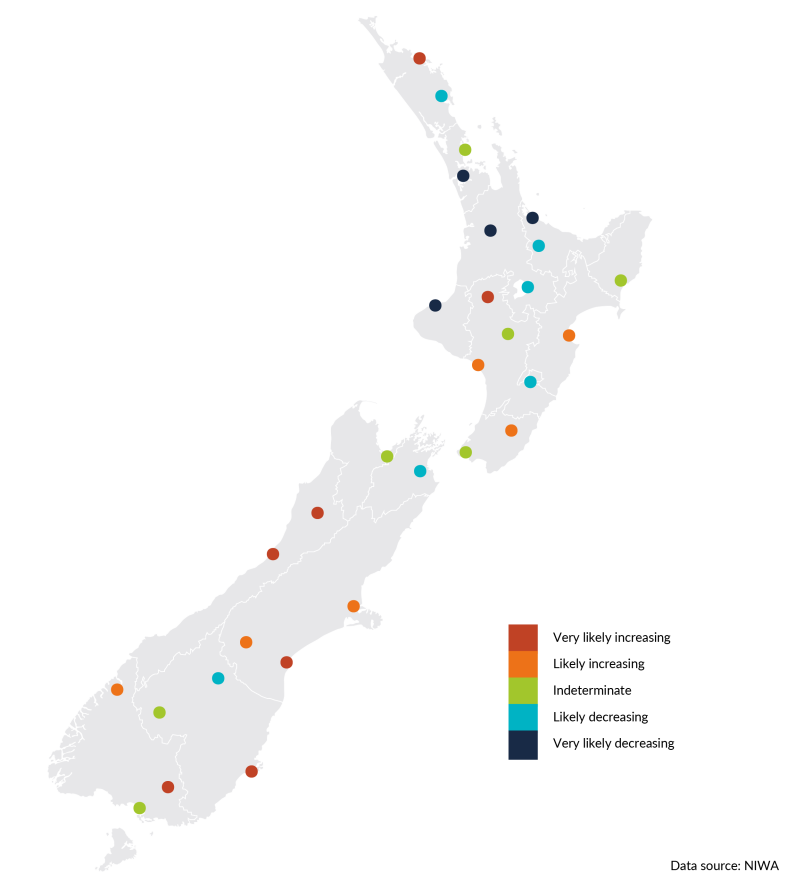
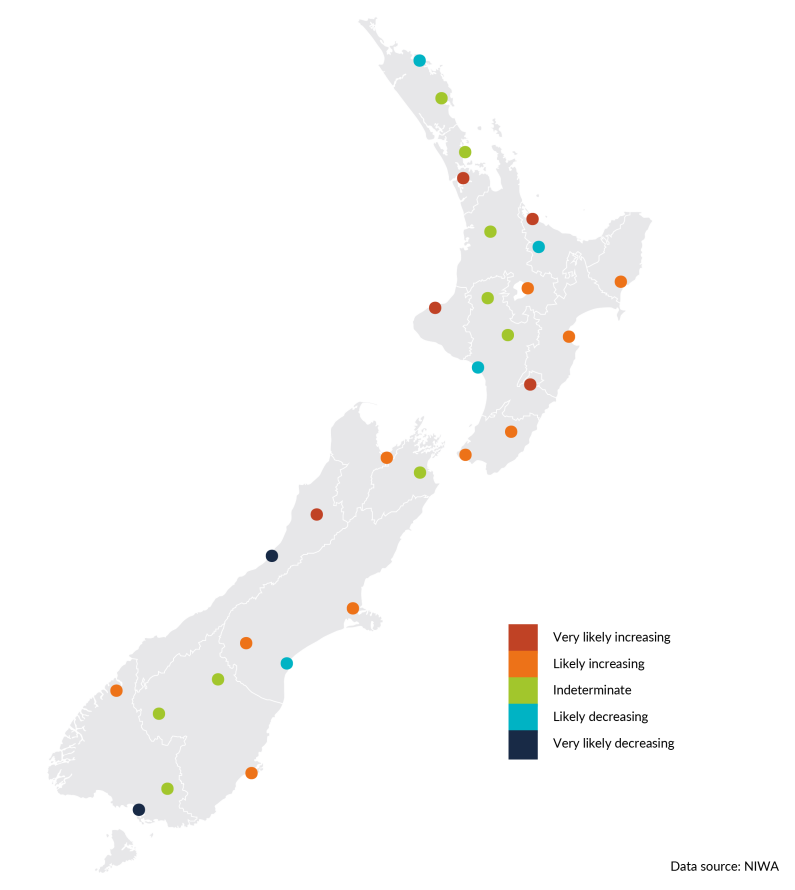
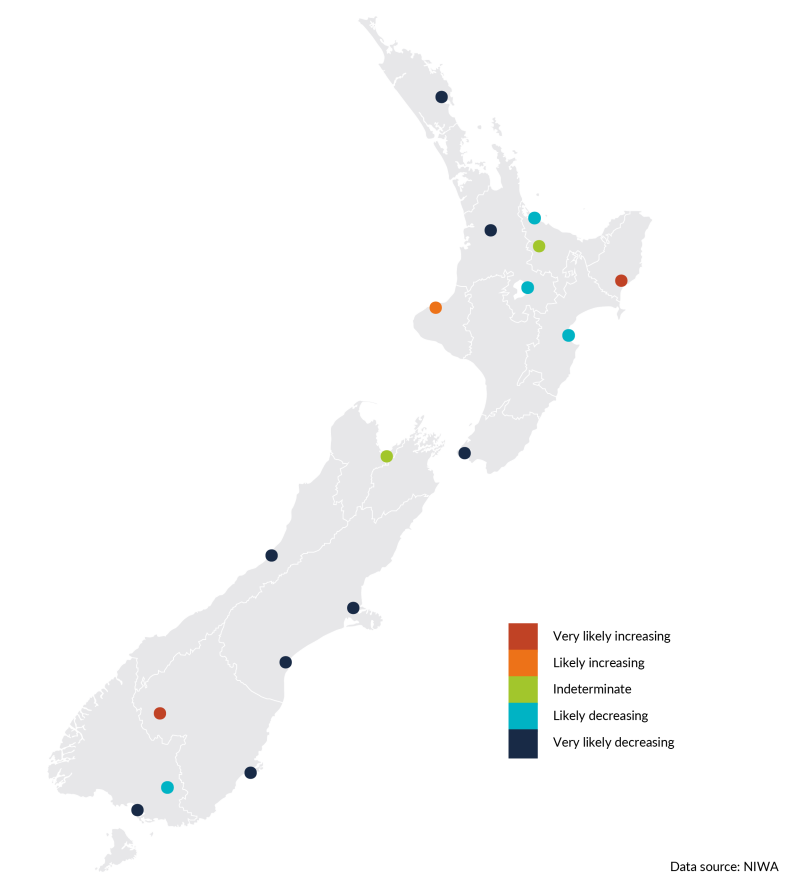

State of our atmosphere and climate
November 2023
© Ministry for the Environment